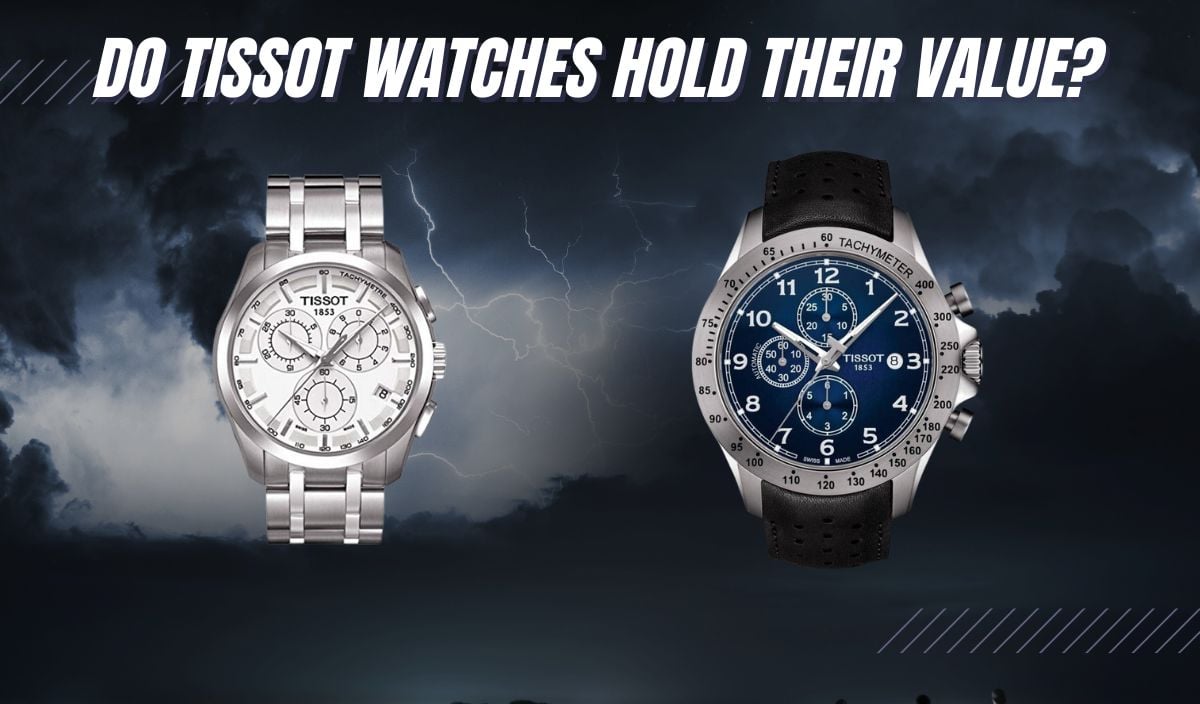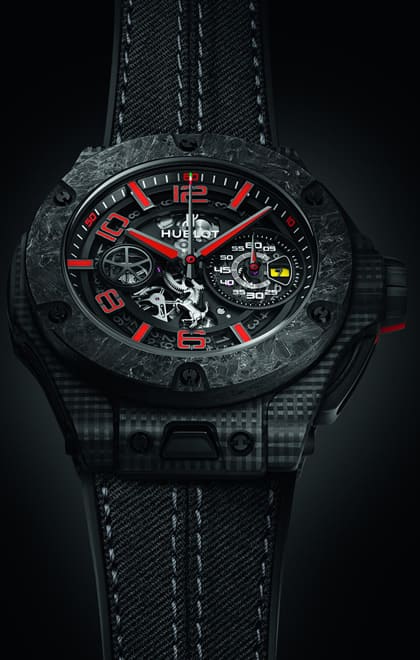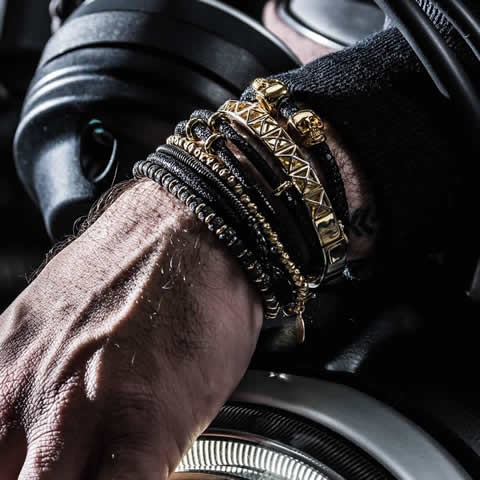
Do Tissot Watches Hold Their Value? (Read BEFORE You Buy!)
To many, Tissot is the entry point to mechanical Swiss watches, and what a place to start! Known for pushing innovation and design, all while listening to their fanbase. In recent years, hits like the PRX, PRX Chronograph, and Gentleman have brought Tissot to the forefront of affordable Swiss luxury.
But does this translate to a good second-hand value price? There are plenty of stories of Rainbow Daytonas selling for five times retail value, but you’d be hard-pressed to find a Tissot pull off the same stunt.
Is that because you don’t hear about these sales, or do they simply not exist? Do Tissot watches actually hold their value?
About Tissot Watches
Tissot (or Tissot SA) finds its origin in Le Locle, Switzerland, in 1853 when it was founded by Charles-Félicien Tissot and his son, Charles-Émile Tissot. After turning their home into a small factory, the father-son duo acted upon their watchmaking endeavor before Charles-Emile Tissot left to sell their savonnette pocket watches in the Russian Empire.
Some of its first achievements include the first mass-produced pocket watch, the first pocket watch to display two time zones, and Tissot was one of the first companies to employ anti-magnetic technology in their wristwatches.
As you can see, Tissot has always been known to push the boundaries a bit. While they might not have been seen in the same light as The Crown or Patek Philippe, they are proud of who they were and who they currently are.
In 1971, Tissot introduced the Astrolon, aka IDEA 2001. While the name would make you believe the watch has to do with astronomy, it’s actually the first watch to be fully constructed in 18K plastic. Jokes aside, this watch (even the movement) was entirely made from plastic.
Perhaps you’re an environmentalist, and plastic does you no good. Well, in 1985, to the soaring chants of hippies and geologists everywhere, Tissot released a rock watch. Well, the geologists would probably point out it’s more like a mineral watch since the materials offered included Alabaster, Aventurine, Basalt, Blue Lace (Agate), Blue Sodalite, Lapis Lazuli, Magnesite, Picture Jasper, Pink Rhodonite, Quartz, and Thulite, of which most are minerals and not rocks.
Hell, in the 80s, Tissot even experimented with wood watches! Today, the brand has evolved slightly from simply using odd materials to being one of the top ‘entry level’ brands in the Swiss watch industry. Producing a wide range of watches ranging from cost-effective quartz options to open-heart mechanical options, there is a Tissot for most of us at most price points.
What Makes Luxury Watches Hold Their Value?
You may have heard that luxury watches outperformed the S&P 500 in the last couple of years, and this is true. Depending on the watch you have (and a few other things), you might be sitting on a little goldmine. Here are some factors that will influence whether or not your watch will hold its value.
Unique Design
There are about a dozen divers with a black dial, black bezel, and steel bracelet. Nothing of interest, yeah? Well, the price difference between a Rolex Submariner and a Rolex Submariner with the ‘Submariner’ text finished in red is about $20,000 – $40,000.
Timepieces offering a unique design, be they small or large, will always catch the eyes of collectors and enthusiasts. These quirky watches might receive nicknames and stories that push the value even further.
Watches like the famous ‘Red Sub’ have something that sets them apart. However, even timepieces that are not that rare could be presented with a certain attribute that could artificially increase the price.
Case in point, the ‘Tiffany’ Casio. It’s a Casio, worth around $50 at retail; however, thanks to the ‘Tiffany’ blue dial, the watch reaches a hefty $200 on the second-hand market. It can be hard to just ‘see’ these design attributes if you do not know watches, so staying up to date with the industry could help you a lot as an investor.
Story
As mentioned, a story can help increase the value of a watch infinitely. Who wore the watch? Why was it made? Is there controversial material? Most of the special gem-set Daytonas aren’t all that nice to look at.
Packed to the brim with gems with barely enough space to see your smug reflection in the gold. However, the ‘Nic Cage’ Daytona still carries a significant markup, partly in thanks to Mr. Cage and that sacred photograph taken so many years together.
A story makes a watch seem alive and full of character, and people are always willing to pay slightly more for a good story and great character.
Brand History
There is no denying the fact that the ‘Holy Trinity’ and the watches they make are extremely sought-after. Chances are, if you purchase one, then you might be able to sell it the next day for far more simply because it’s a Patek.
A brand with significant history or a brand that now lies in the history books will always garner some extra cash. There might be models you could lose out on; however, these brands usually carry a significant markup over retail price.
Exclusivity
Tying in with the brand of choice, we have the exclusivity of the brand or watch itself. Special edition? Well, guess that simply means people will be fighting to get their best offer in. Anniversary model? Put that bad boy in a safe, merely look at it, and laugh your way to the bank a few months later.
The one thing to consider is that most of us are not exclusive enough people to be able to afford exclusive watches. Chances that a retailer will sell a ‘normal person’ a watch that was only produced 20 times are slim to none.
Production Time
Penultimately, how many were produced? This is different from exclusivity, as sometimes we see production runs end abruptly or changes made earlier than we thought. Case in point, the SeaDweller 4000 was merely produced for three years.
While this is a normal sports watch in the catalog, you don’t see them every day. And things that we don’t see very often will always bring in more cash than run-of-the-mill things.
Condition
Lastly, how well did you look after your watch? If it’s a vintage model with replaced hands and hour markers, you will lose value. If it’s a new model left in pristine condition, you won’t lose value. It’s a bit hard to tell what people want in this segment, but all you have to know is the same watch might have a $10,000 difference due to the condition.
Do Tissot Watches Hold Their Value?
And finally, we get to the meat of the article. What is going to happen to the value of your Tissot? Chances are that your Tissot will lose value.
That might be a sore pill to swallow, but when considering the factors laid out above, there really is no reason for your Tissot to increase in value at all.
Some Tissots might have unique designs and stories, but these are limited to vintage models, mostly. You might come across the exception to the rule here and there, like the new ice blue PRX, but for the most part, it’s only vintage models which will hold or increase their value.
Tissot is an exceptional brand, but they rarely offer exclusivity. Their market approach is to create affordable Swiss luxury. Once something becomes affordable, it’s far less likely to hold its value because why wouldn’t you just buy a new one?
You do stand a chance to make some money if you consider selling it to a third-world country or on a social media site. The former is self-explanatory. Due to the exchange rate, you might be making all your money back; however, your client might be getting the deal of the week.
The latter idea is something I’ve seen in person. Tissots being offered on Facebook at 90% of the retail price even though it’s clearly been worn for a while. And people buy them! What I have also noticed is the folks who do buy them are not clued up on watches and do not realize they’re not getting a great deal.
Do Tissot Watches Appreciate In Value?
For the most part, no. I hate to be the person who brings you bad news, but you probably won’t be making your money back. There are a few exceptions to this rule, however. This doesn’t mean you’ll make all of your money back; however, you might make 90% of it back if you do your marketing correctly:
- PRX/PRX Chronograph: The hottest thing on the block (still), and for a good reason. You might make your money back on some of the more sought-after Powermatic version, or some of the Quartz options if you market to individuals who wouldn’t know the difference.
- Le Locle: If you really take care of it and market it to folks who would really just want a beautiful (but Swiss) watch, this could be a decent investment.
- Gentleman: A timeless classic that seems to hold value because it’s the do-it-all watch at a reasonable price.
Making a return on any investment has to do with a certain amount of risk. When buying a Tissot, you aren’t taking a huge risk because there are about a dozen of the same model in the same shop. While they are amazing timepieces, they simply are not exclusive enough.
What About Vintage Tissot Watches?
We’ve mentioned that vintage watches will stand a far better chance of retaining their value, and a select few might even make you some cash. So, what about vintage Tissot watches? Are there any ones that held their value or increased in value?
Reference 6216 Lemania chronograph
Most vintage chronograph Tissots will hold some value, and this ref. 6216 is a proper example. Released in the early to mid-40s as a co-development between Tissot and Lemania under the SSIH (Société Suisse pour l’Industrie Horlogére — Swiss Society for the Watch Industry) brand. A radium dial, large Arabic numerals, and an appropriately sized 35mm case make for a beautiful vintage piece that might retain its value.
Tissot/Omega 33.3 Chronograph
Omega was part of the same SSIH company and, along with Tissot, developed perhaps one of the most gorgeous vintage chronographs that don’t belong to one of the Holy Trinity. The large size of 40mm isn’t something we often see with watches from the 40s, and neither is the legendary chronograph movement called caliber 33.3 and made by Omega.
Tissot Navigator 4002
The Navigator is perhaps one of the most well-known vintage Tissot models, and this ref. 4002 is one of the most sought-after. A world timer with a difference, and you merely need to look at it and understand why some folks are eager to dish out $20,000 for this bad boy.
Conclusion
Tissot is exceptional at what it does, which is being the first Swiss watch you can afford and feeling happy when you see the “SWISS MADE” on your wrist. Unfortunately, it’s unlikely that your watch will hold its value.
While a new Tissot is very desirable, there is nothing about them that would make them desirable as a second-hand option. Sure, there might be a few contemporary options that hold value better than others; however, you should make peace with the fact that you’re buying a watch to be used.
Or, you might have one of the gorgeous vintage Tissot chronographs that have shot up in value well past $20,000. Will they keep climbing? Probably, seeing as the exclusivity will simply increase even more as time goes on.
All this said, buy a watch you love. If you want to invest in watches, go ahead, but a Tissot is not a good investment for a monetary return. However, that Sky Blue PRX will look damn good with a suit.
About Exquisite Timepieces
Established in 1998, Exquisite Timepieces is your one-stop shop for all things luxury watches! We are an authorized dealer for 60+ luxury watch brands including Omega, Hublot, Seiko, & Longines! We are proud to showcase one of the world’s largest pre-owned watch collections, including renowned brands like Rolex and Patek Philippe. Check out our brand new watch arrivals here and popular pre-owned listings here.








